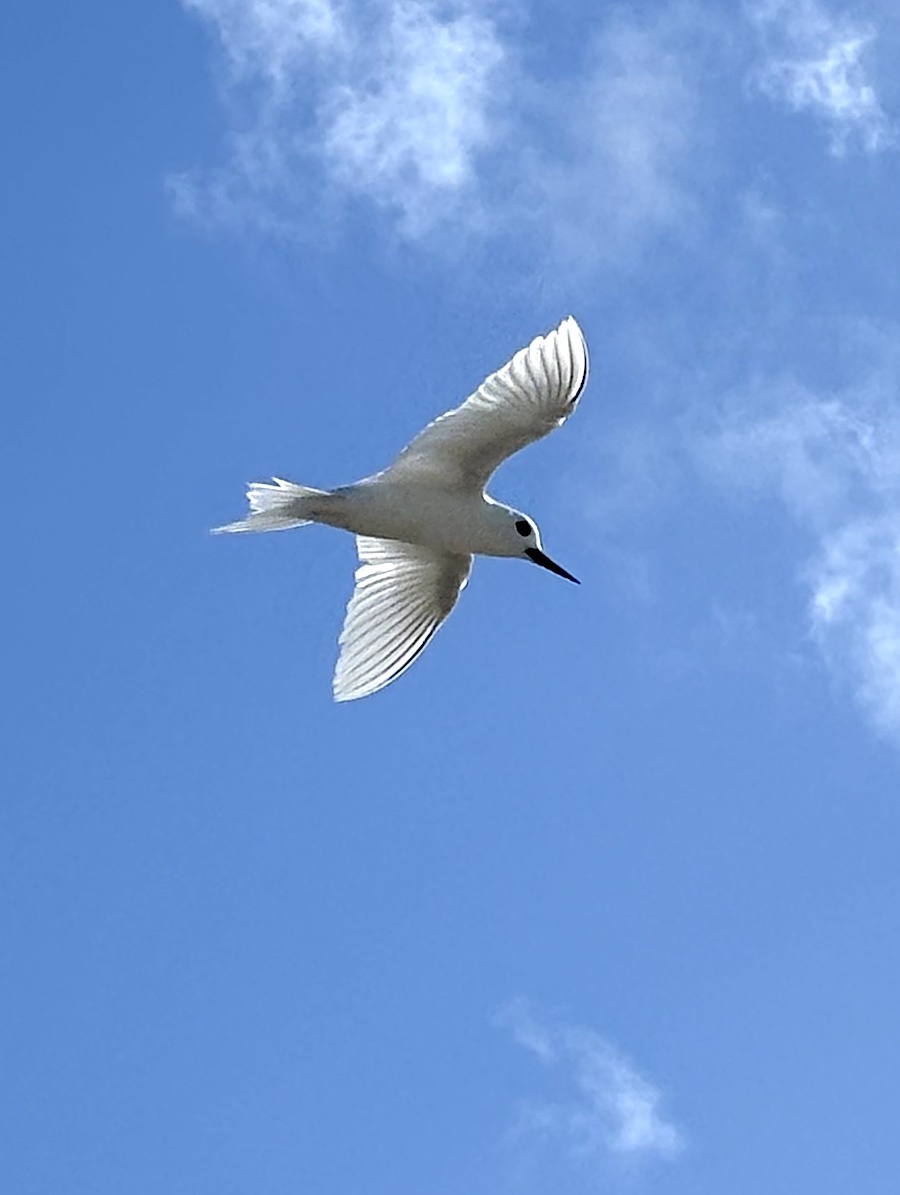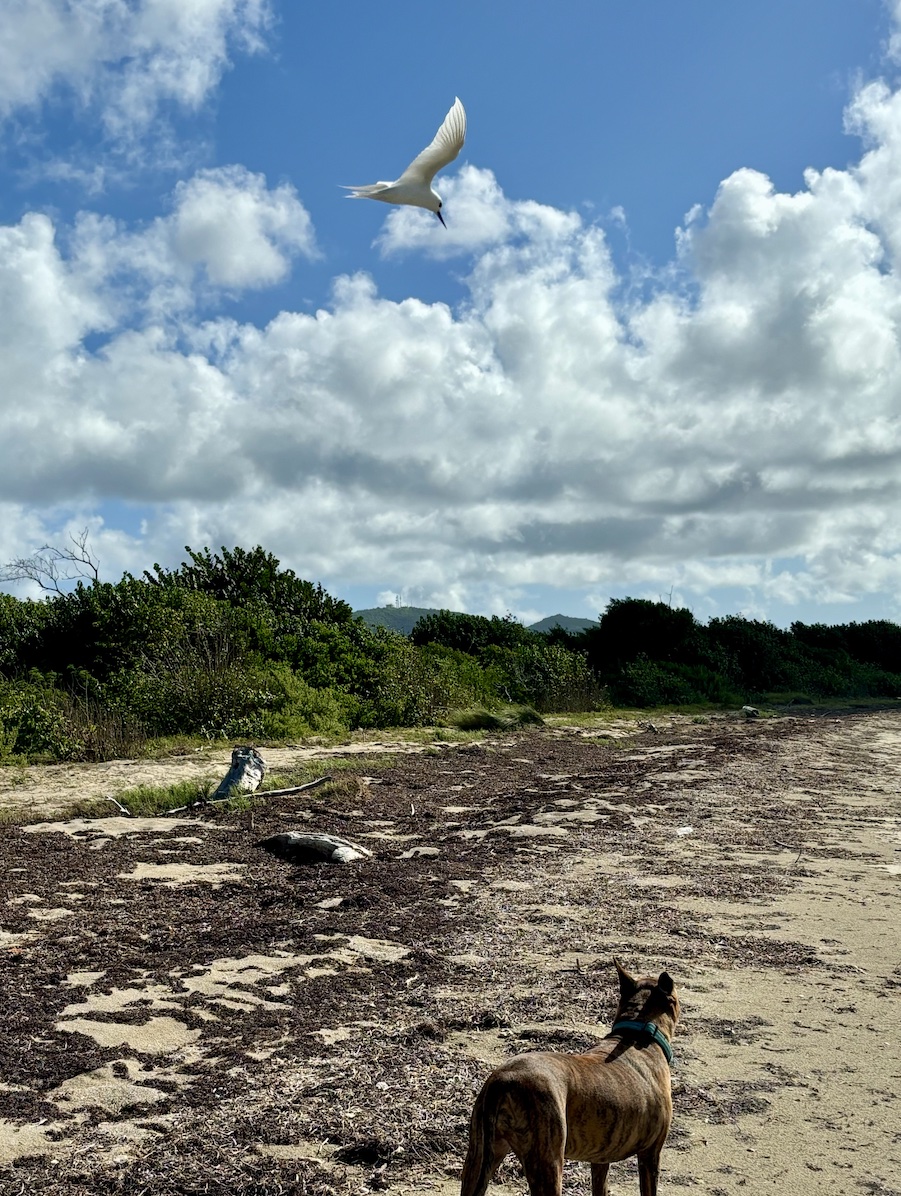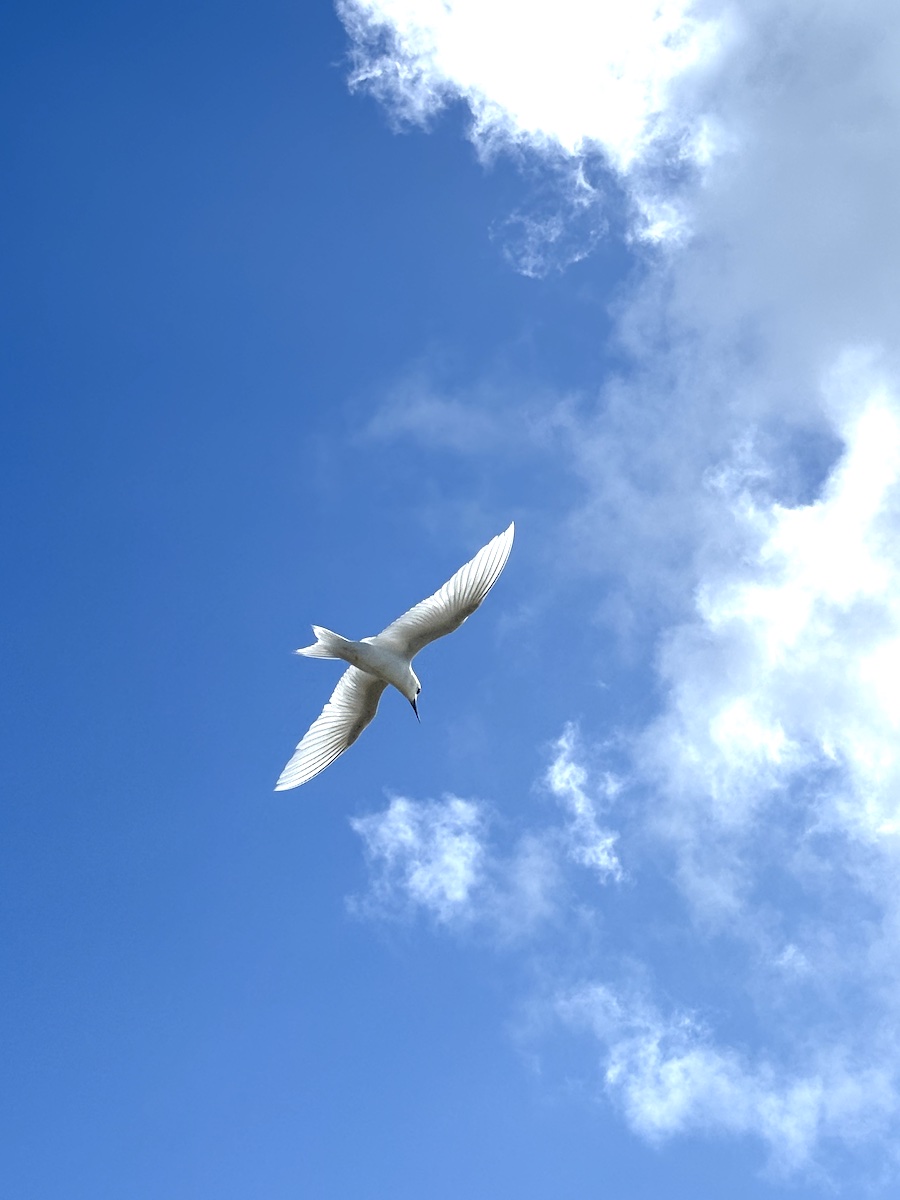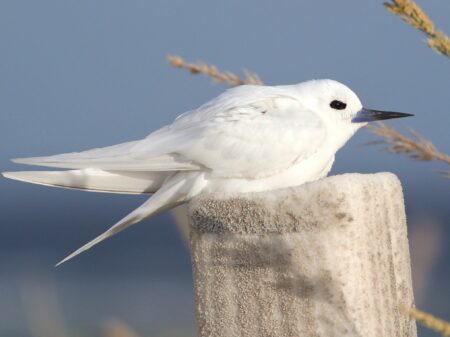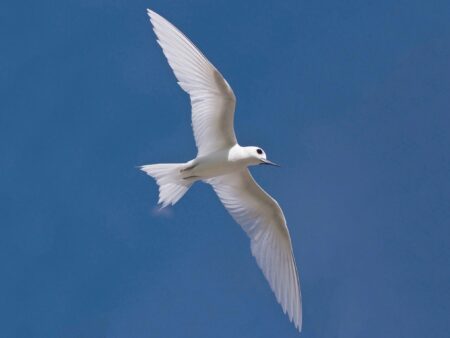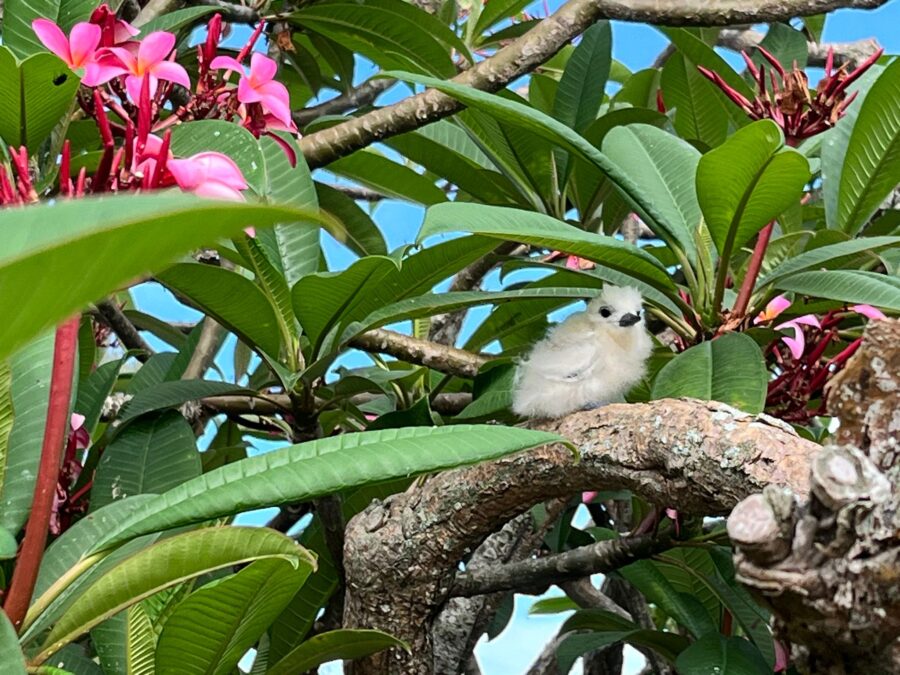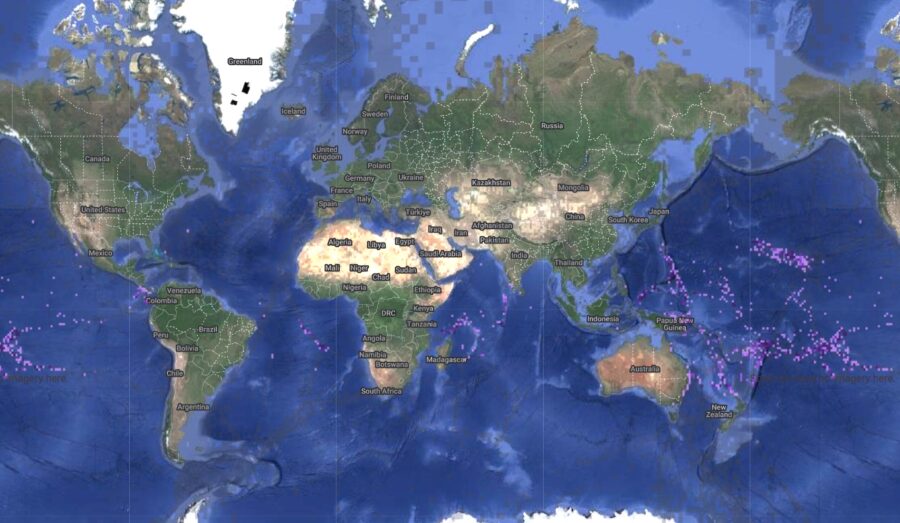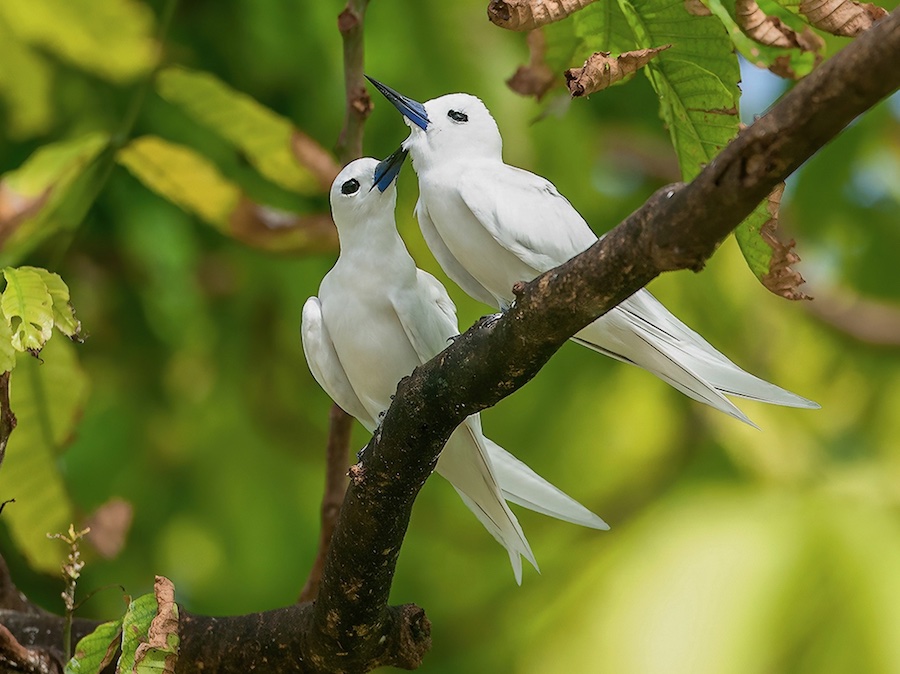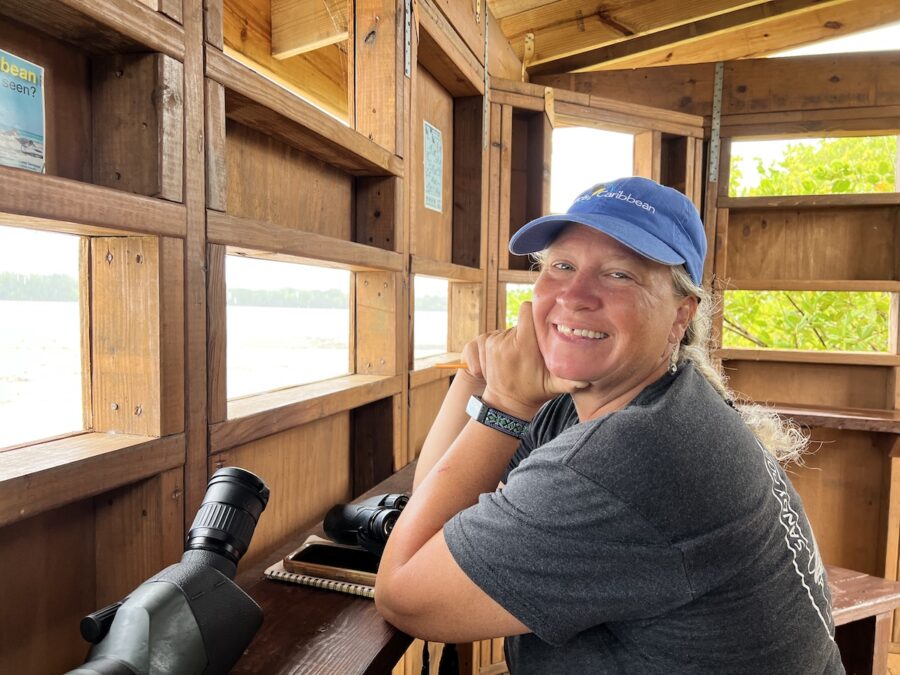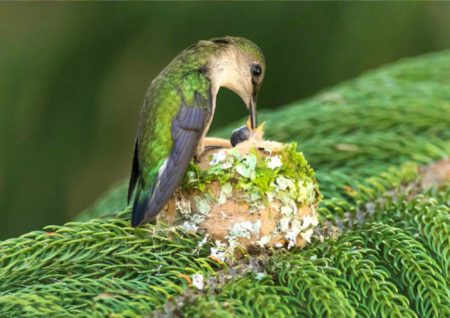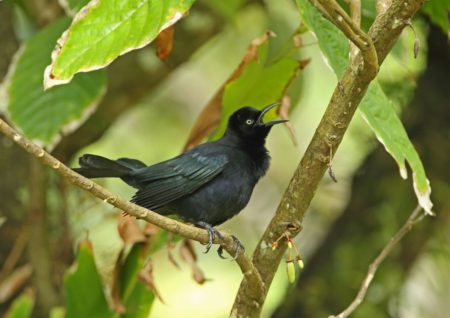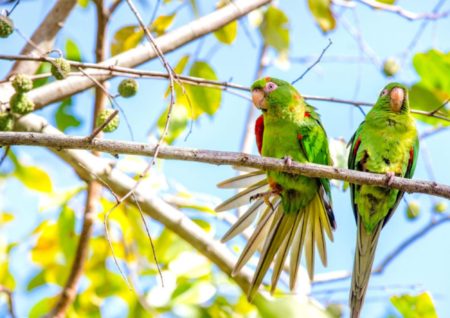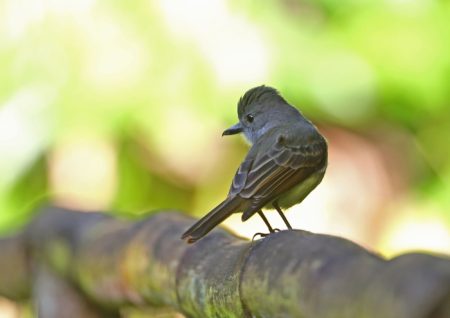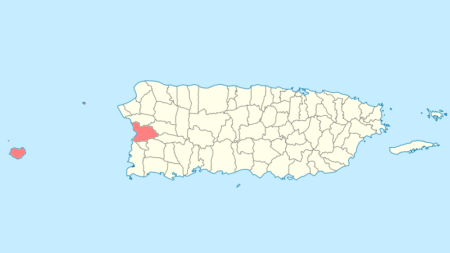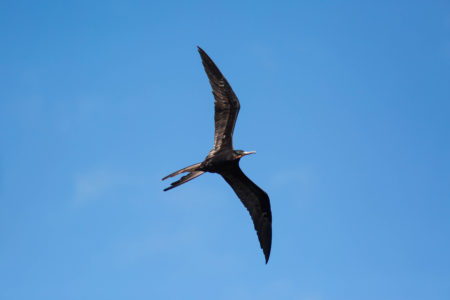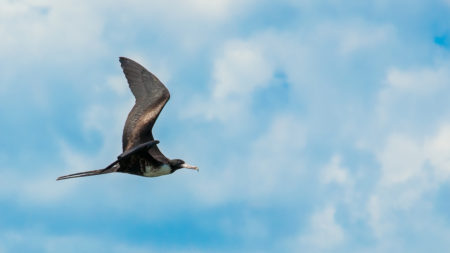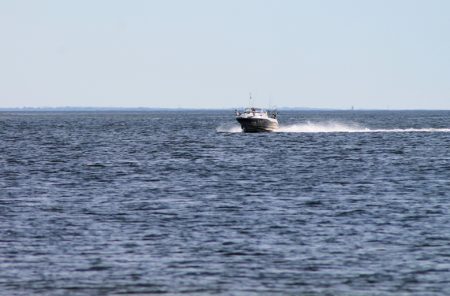We’re still buzzing from our fantastic BirdsCaribbean 24th International Conference in Santo Domingo! Our week-long Dominican Republic adventure was packed full of insightful learnings, spectacular birding, and experiencing the rich culture of our gracious hosts — but there’s one feature of the conference that most stands out to us — our incredible community! The opportunity to connect with the passionate trailblazers advancing the work of bird conservation across the region was unforgettable. Thanks to our generous sponsors, we were able to offer scholarships to Caribbean conservation leaders from around the region to join us in sharing knowledge and planning interventions to tackle the Caribbean’s most pressing conservation challenges. One superstar conservationist that we were thrilled to host at the conference was Trinidad and Tobago’s Giselle Ragoonanan.
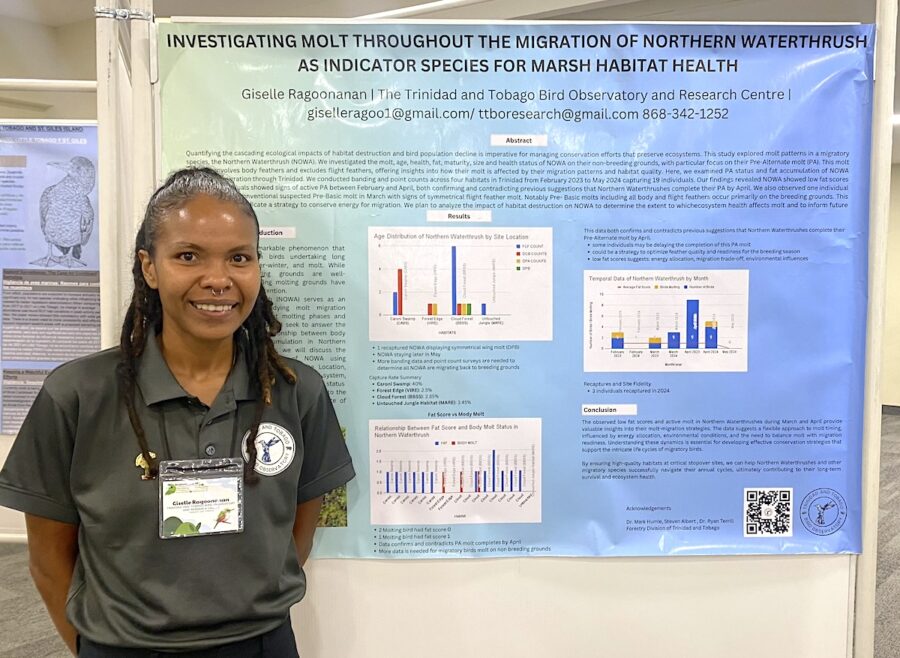
An indigenous naturalist and dedicated educator, Giselle is the co-founder of the Trinidad and Tobago Bird Observatory and Research Centre (TTBO) which works towards advancing avian research, conservation, and education through bird banding, habitat management, and community engagement spanning across both islands. As a sponsored delegate, Giselle Ragoonanan had the privilege of diving deep into workshops and discussions that nurtured her passion for preserving Caribbean birds. From hands-on training in advanced monitoring techniques to dynamic sessions led by conservation leaders, each moment was a step toward impactful change. Join Giselle as she shares insights from inspiring keynotes, innovative collaborations, and the personal connections that transformed this conference into a pivotal experience for her work at the TTBO.
Bird Nerds Unite! Workshops and Learning: Diving into Conservation
July was a whirlwind month, and the highlight was undoubtedly the BirdsCaribbean International Conference in Santo Domingo, Dominican Republic. This event brought together hundreds of bird enthusiasts, conservationists, and researchers from across the world, all with a shared passion for avian life. For me, it was more than just a conference—it was an unforgettable experience filled with learning, laughter, and connections that I’ll carry with me for years to come.
The pre-conference workshops were a true highlight of the event, setting the stage for the deeper discussions that would unfold during the conference itself. These sessions were intense but incredibly rewarding, covering everything from advanced bird monitoring techniques to community-based conservation strategies diving into the nitty-gritty of bird conservation across the region. Each session offered valuable insights that were immediately applicable to our work on the ground. It was a chance to deepen my knowledge, share experiences, and learn from some of the brightest minds in bird conservation.
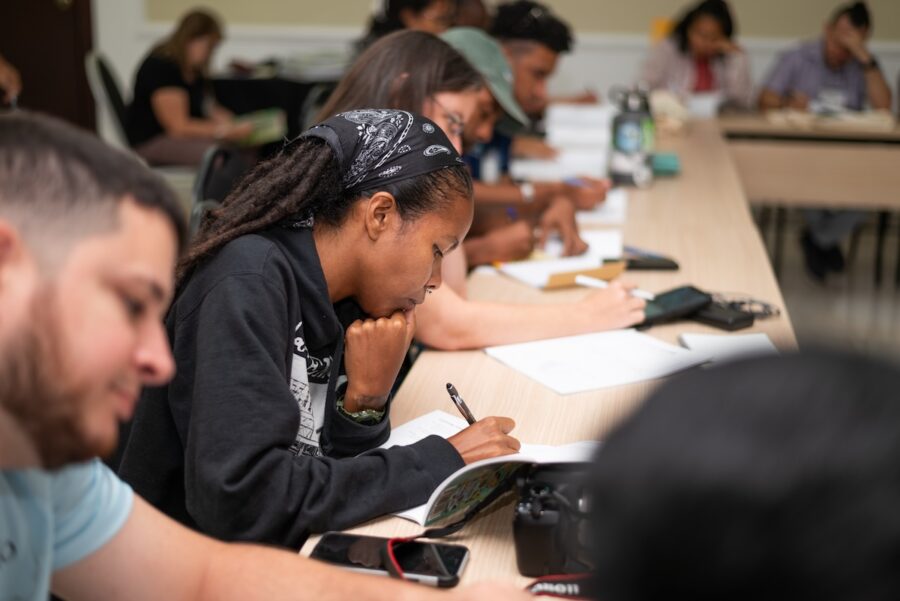
What made these workshops particularly effective was their interactive nature. Instead of passively absorbing information, we were actively engaged in problem-solving exercises, hands-on work, and group discussions that fostered collaboration and idea-sharing. This approach deepened our understanding of the topics and equipped us with new tools and techniques that could be adapted to our unique challenges back home.
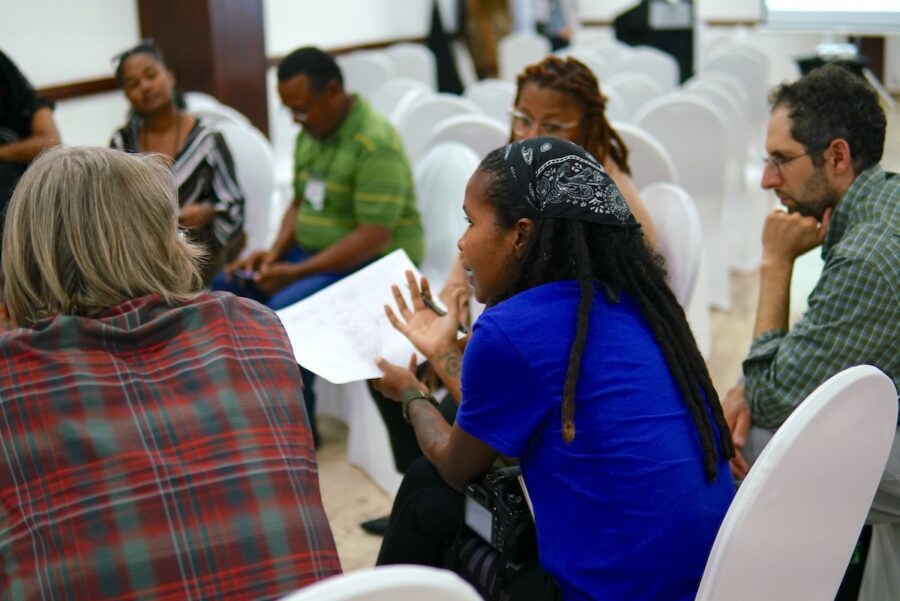
These workshops laid a solid foundation for the conference’s breakout sessions. The knowledge and skills we gained beforehand allowed us to engage more meaningfully in discussions, ask more targeted questions, and contribute to the collective learning experience. The seamless integration of these pre-conference workshops with the broader conference agenda made the entire event cohesive and impactful, ensuring that we left with actionable takeaways and a clearer sense of direction for our conservation efforts.
The Urban Birder: David Lindo’s Inspiring Keynote
One of the most anticipated sessions of the conference was the keynote address by David Lindo, famously known as “The Urban Birder.” David’s talk was nothing short of inspiring. He’s well known for his mission to connect urban populations with nature, particularly birds. He talked about his fascinating journey to to get the nation involved in changing Britain’s national bird from the robin to a species that truly represented the country. What struck me most was his genuine passion for getting people to simply look up and appreciate the birds around them, regardless of where they are. His energy was contagious, and it left everyone in the room buzzing with ideas on how to engage more people in birding, whether in bustling cities or rural landscapes.
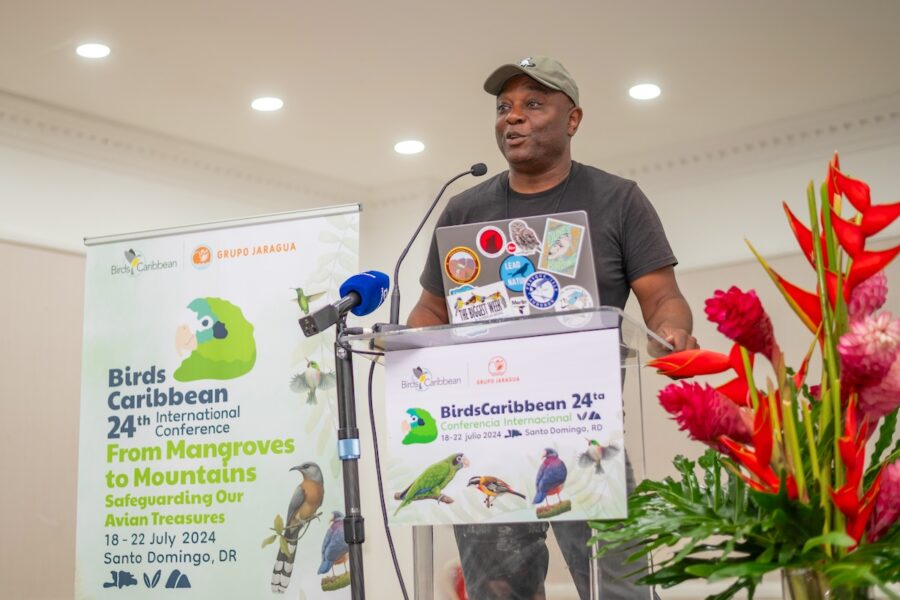
Shaping the Future of TTBO: Insights and Innovations from the BirdsCaribbean Conference
The BirdsCaribbean International Conference was a turning point for the Trinidad and Tobago Bird Observatory and Research Centre (TTBO). The insights and connections we gained during the event will undoubtedly shape our organization’s future. One of the most significant takeaways was the potential to integrate cutting-edge technologies and collaborative networks into our conservation efforts with the MOTUS project. This stood out as a particularly promising initiative. I think by joining this network, TTBO can contribute to and benefit from a global effort to better understand bird migration patterns, which is crucial for developing effective conservation strategies.
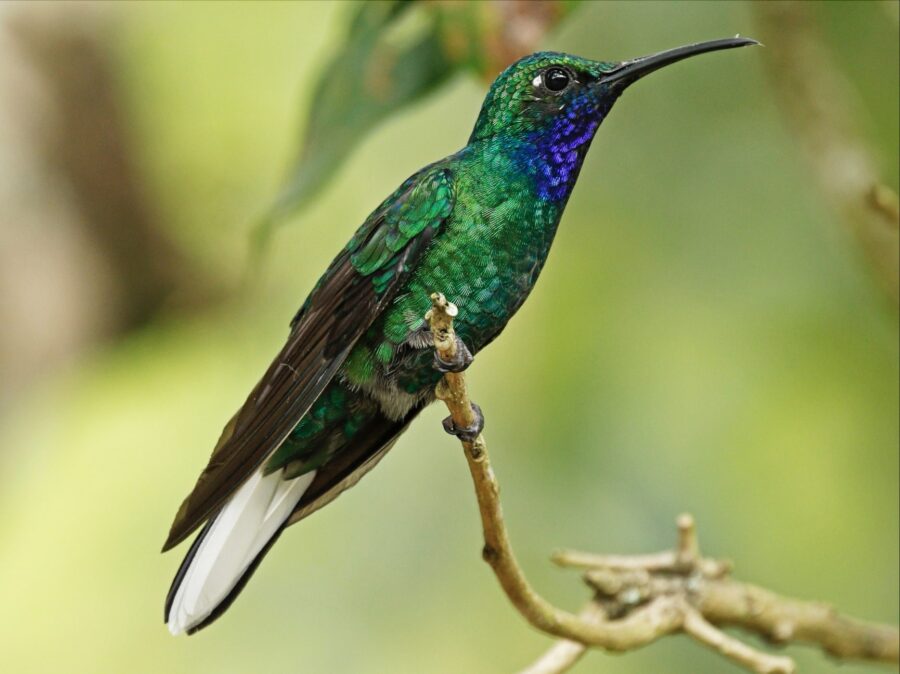
Additionally, the conference highlighted the importance of rigorous, standardized monitoring techniques, such as Landbird Monitoring through point counts and transect points. Applying these methods will allow us to gather consistent, high-quality data on bird populations in Trinidad and Tobago, providing a solid foundation for our research and conservation initiatives.
The connections made at the conference were just as impactful. Engaging with other conservationists who are implementing similar projects across the region offered valuable insights into best practices, potential challenges, and innovative solutions. These interactions have already begun to shape our approach to future projects, ensuring that TTBO’s efforts are aligned with global conservation standards, and are part of a broader, collaborative network.
Building Connections and Sharing Our Work
One of the most rewarding aspects of the conference was the opportunity to share the work we’ve been doing in Trinidad and Tobago with a broader audience. Presenting our initiatives and progress at the Trinidad and Tobago Bird Observatory and Research Centre sparked insightful conversations and constructive feedback from peers across the region. It was incredibly validating to hear seasoned professionals express admiration for our efforts, and even more so to engage in dialogues where we could exchange ideas and strategies.
The connections we made were not just professional; they were deeply personal. It was fascinating to see how scientists and conservationists from different corners of the Caribbean and the world, each working in distinct ecosystems, were tackling similar challenges. The sessions became a melting pot of ideas, where everyone was eager to share their successes, failures, and lessons learned. We were all trying to piece together similar puzzles in our respective environments, and this collective brainstorming inspired me.
The genuine interest people showed in our work was both humbling and motivating. There was a strong sense of camaraderie as we realized that, despite the geographical distances, we were all part of a larger, interconnected community. These interactions reinforced the idea that conservation is not a solitary pursuit but a collaborative effort that thrives on shared knowledge and mutual support. For me, the conference drove us beyond networking; it was about building lasting partnerships and fostering a regional network of allies who are all striving towards the same goal: the preservation of our unique Caribbean biodiversity.
The Grand Silent Auction: Beautiful Chaos
The Grand Silent Auction was, in true Caribbean style, anything but silent. It was a delightful, chaotic spectacle where the usual calm and composed demeanor of scientists gave way to competitive zeal. Picture this: conservationists and researchers, who are usually discussing bird migration patterns and habitat restoration, suddenly turn into stealthy bidders, eyeing each other’s movements with laser focus. The air was thick with a beautiful and disruptive chaos as everyone tried to silently undermine their competitors by upping the bid by just 50 cents (AKA ME LOL). The room was filled with furtive glances, whispered strategies, and the occasional playful smirk as someone outbid their colleague at the last second. It was one of the funniest yet most rewarding human interactions I’ve ever observed—who knew that scientists could be so cutthroat when there’s a field guide or a rare bird print on the line? The auction was a hilarious reminder that, underneath the serious commitment to conservation, we all have a playful, competitive side just waiting for the right moment to emerge. And yes, ah win the map I alone bid on! Success!
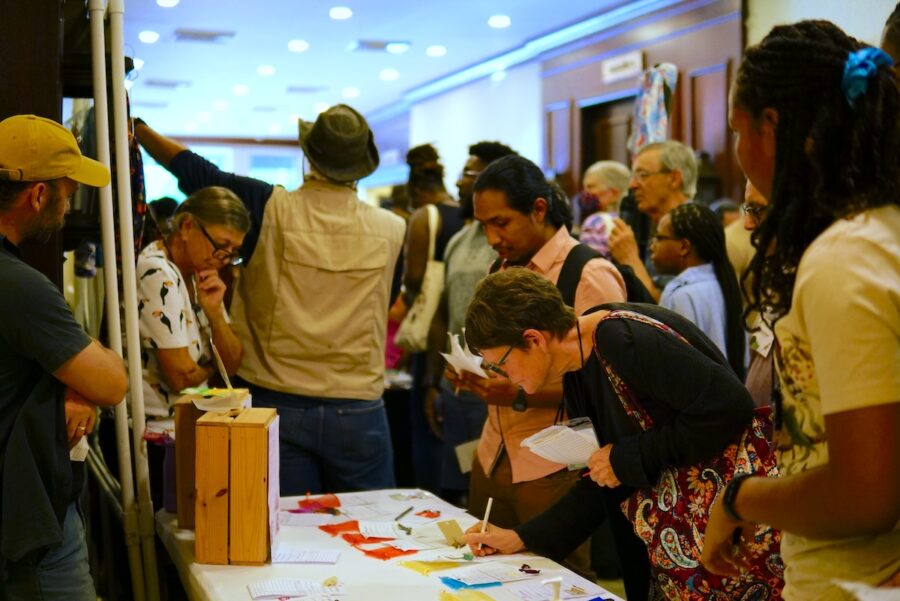
The Infamous Field Trip: From Punta Cana to “Poola Cana”
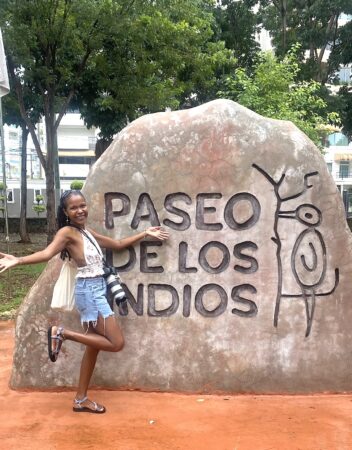
Ah, the field trip—what should have been a serene journey to the stunning hotspot of Punta Cana turned into an adventure all its own. In a classic case of “missing the bus,” what actually happened was the bus was scheduled to leave at 3:30am and I snoozed my alarm. Instead of Punta Cana, we jokingly dubbed our unexpected destination “Poola Cana.” We may not have reached our intended location, but the pool, pizza, and spontaneous birding we enjoyed made it one of the trip’s highlights. Sometimes, the best memories are the ones you don’t wake up on time for!
A Journey of Inspiration and Growth
Attending the BirdsCaribbean International Conference was not just an opportunity for professional development—it was a journey of inspiration and growth. My primary purpose for attending was to deepen my understanding of regional conservation efforts, to learn from others, and to find ways to enhance the work we’re doing in Trinidad and Tobago. BirdsCaribbean delivered on all these fronts and went far beyond my expectations.
The collective energy of the conference was palpable. Even those who have been in the field for over 20 years were visibly inspired by the new ideas and fresh perspectives brought by the younger generation of conservationists. There was a sense of renewal, as seasoned professionals shared their wisdom while also eagerly embracing the innovative approaches presented by up-and-coming researchers and activists. It was a powerful reminder that conservation is a dynamic field, one that benefits immensely from intergenerational collaboration.
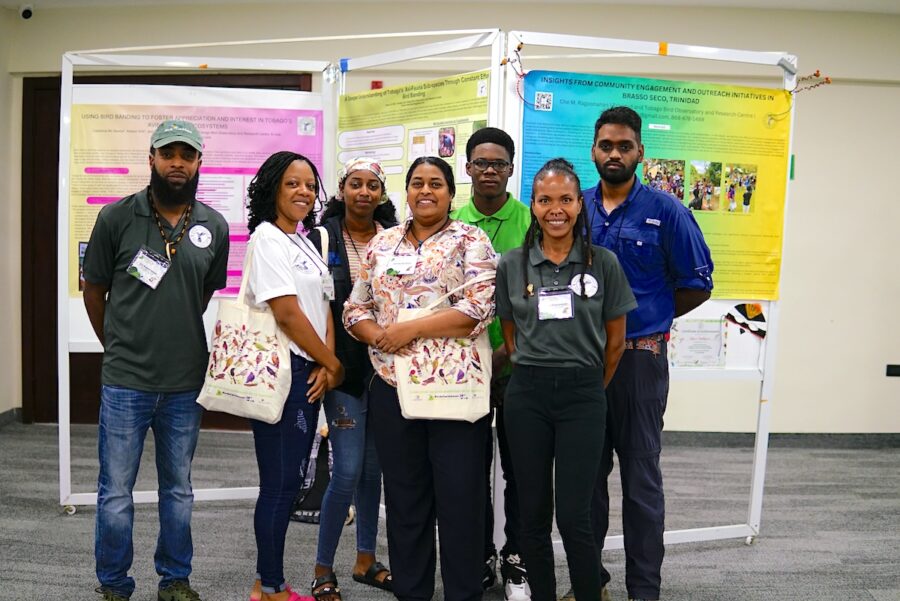
For me, the conference reaffirmed the importance of our work and provided a renewed sense of purpose. I left Santo Domingo with a deeper commitment to the birds and ecosystems we strive to protect, fueled by the knowledge that we are part of a vibrant and supportive community. The experience was a reminder that no matter how challenging our work may be, we are not alone in this journey. We are all connected by our shared passion for the natural world and our determination to ensure that future generations can continue to marvel at the beauty of Caribbean birdlife.
The BirdsCaribbean International Conference was more than just an event; it was a transformative experience. It strengthened my resolve, expanded my horizons, and connected me with a network of incredible individuals who are all making a difference in their own unique ways. As I return to Trinidad and Tobago, I carry with me not only new knowledge and ideas, but also the inspiration and support of a community that I am proud to be a part of.
Giselle Ragoonanan is an Indigenous naturalist and wildlife conservationist with a deep passion for preserving biodiversity. A certified NABC bird bander and nature soundscape recordist, Giselle is honing expertise in avian research and conservation. As the co-founder of the Trinidad and Tobago Bird Observatory and Research Centre (TTBO), she has been working towards advancing bird conservation in the Caribbean. Giselle is also a committed educator, sharing her knowledge and fostering a deeper connection between people and the natural world. Through her work, she continues to inspire and engage communities in the protection of wildlife and their habitats.
Acknowledgements
We extend our sincerest gratitude to everyone who contributed to the overwhelming success of this conference! Travel and Attendance scholarships were made possible through the generosity of our conference sponsors, donors, and local partners. These include The Rufford Foundation, Audubon, US Forest Service, Teleuniverso, American Bird Conservancy, Banco Popular, Caribbean Biodiversity Fund, Fondo Nacional para el Medio Ambiente y Recursos Naturales (Fondo MARENA) Dominican Republic, Naturalist Journeys, Vermont Center for Ecostudies, Mass Audubon, Cúa Conservation Agency, Vortex Optics, Rare Species Conservatory Foundation, and the FUPAROCA Foundation.








